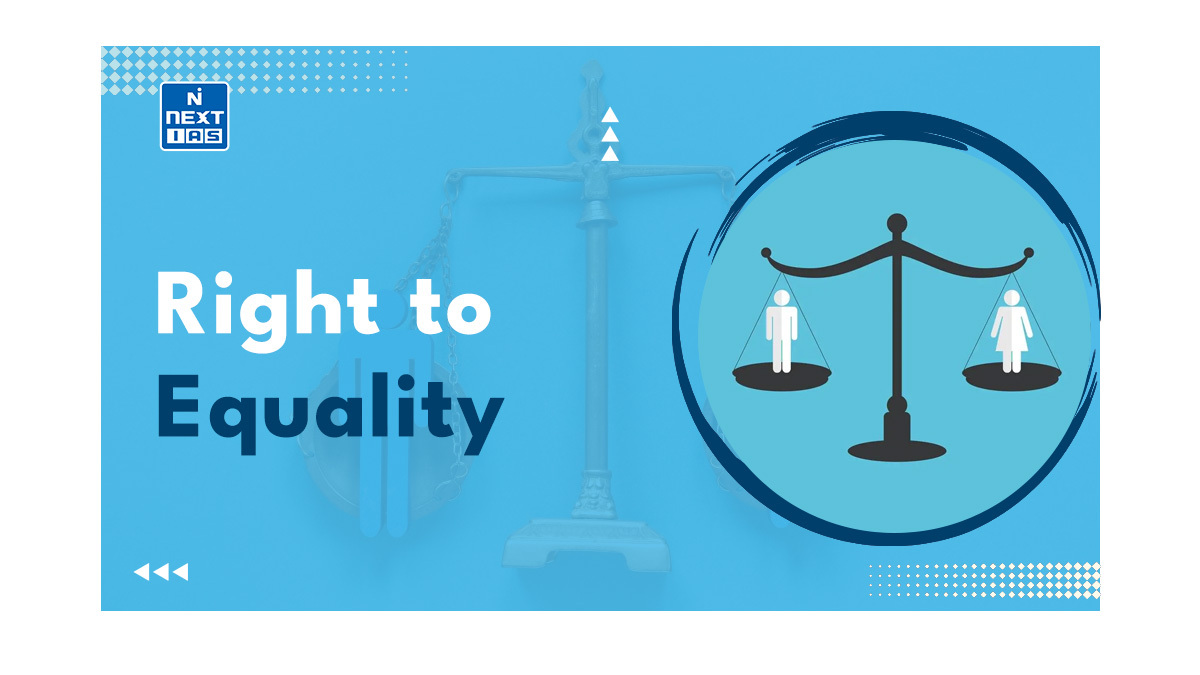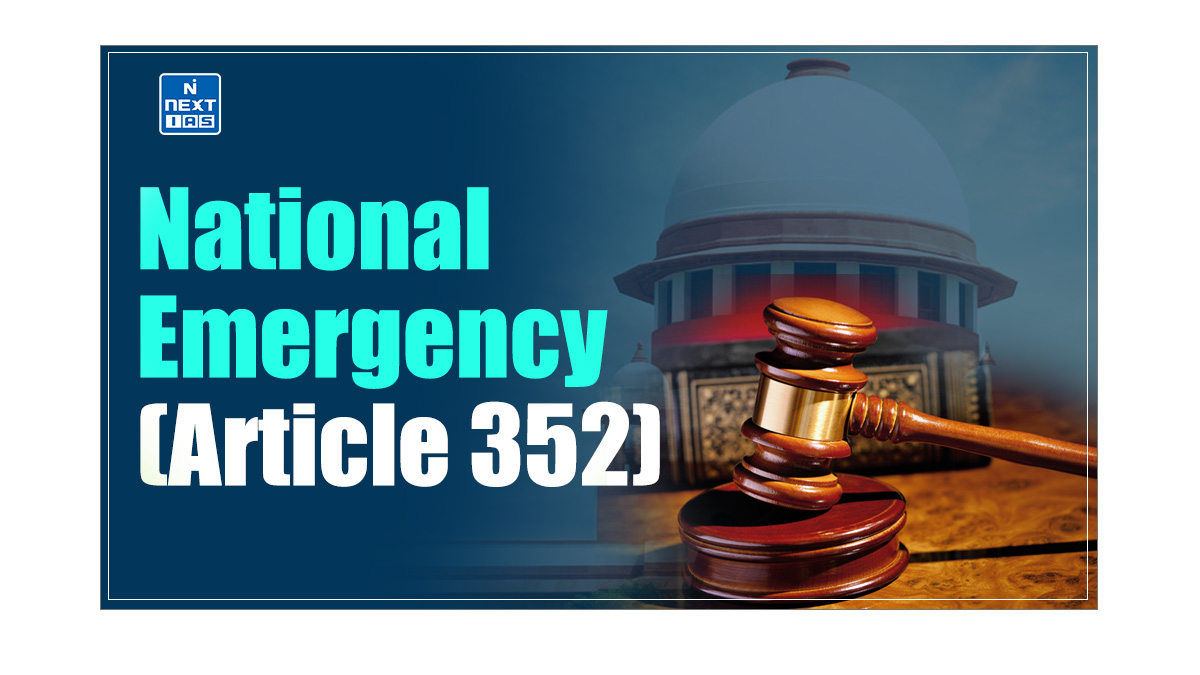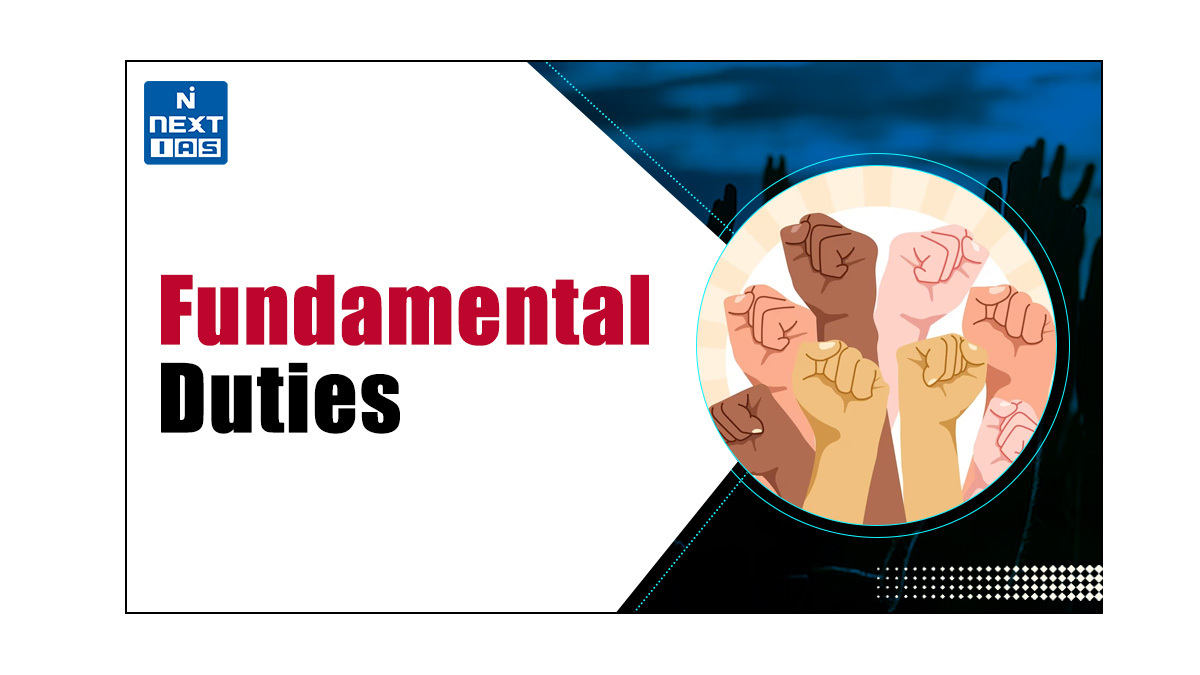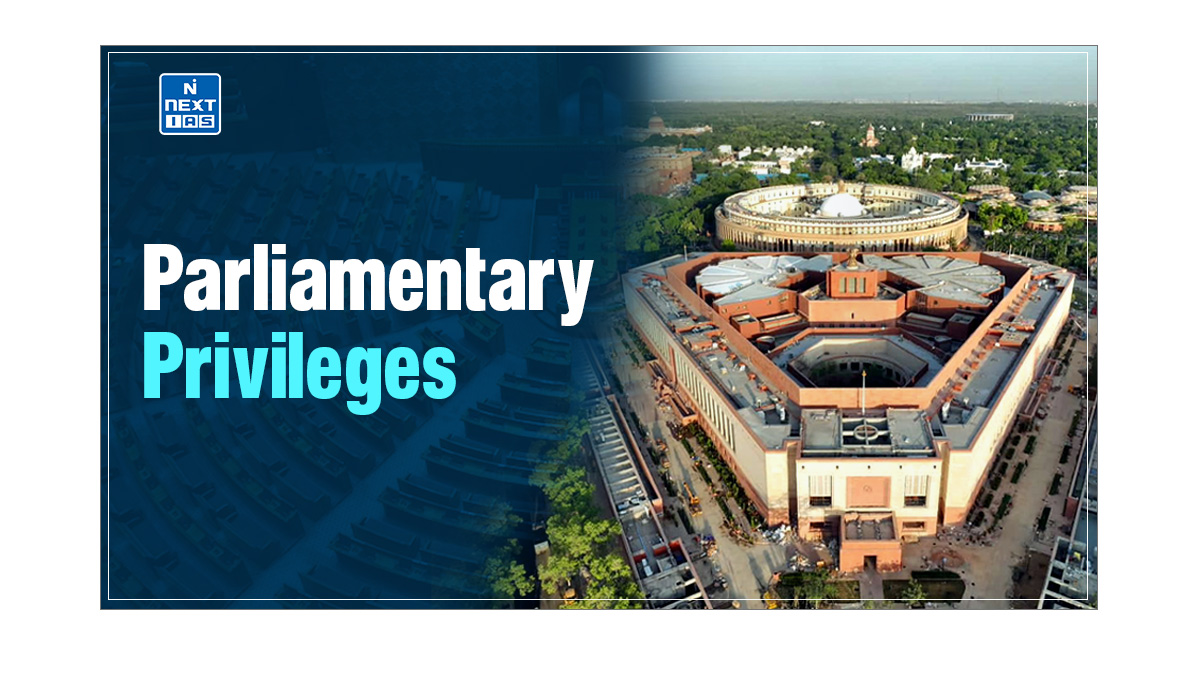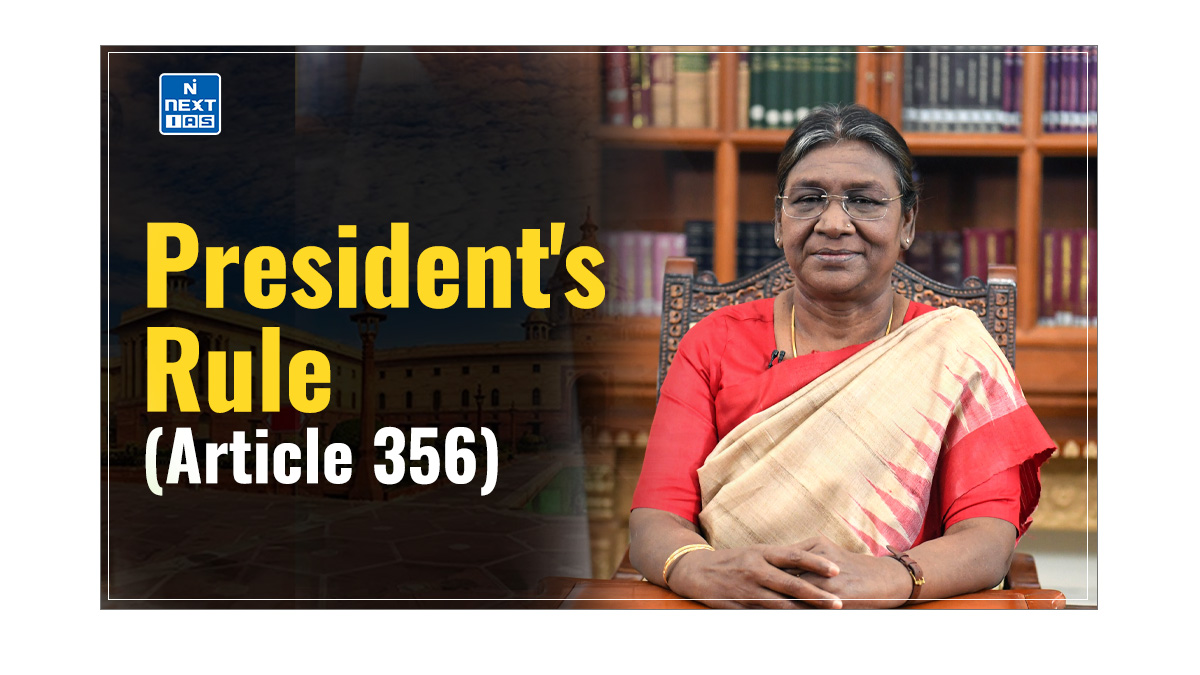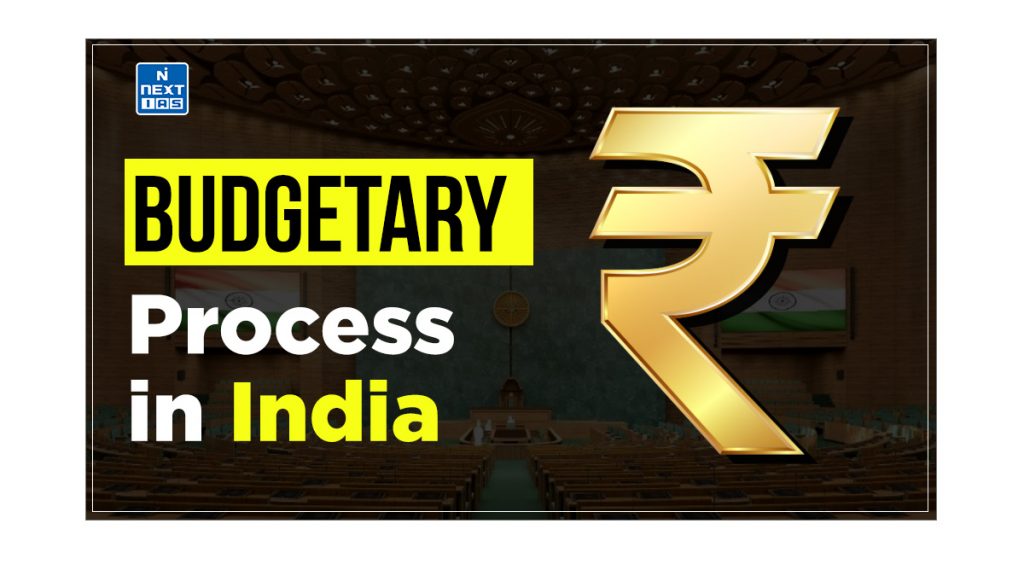
The presentation and enactment of the Union Budget in Parliament is a significant event that outlines the financial planning and economic strategy of the Union Government. By providing a comprehensive financial plan for the country, it plays a crucial role in shaping India’s economic future and addressing the needs and aspirations of its citizens. This article aims to study in detail the budgetary process in Parliament, related constitutional provisions, its components, stages of enactment, and other related concepts.
What is Budget?
- The Budget is a statement of the estimated receipts and proposed expenditures of the Government for an upcoming financial year i.e. a period that runs from 1st April to 31st March of the ensuing year.
- It serves as a comprehensive financial plan that reflects the economic strategy and policy priorities of the Government.
- The Budget is formulated and enacted annually by the Union Government as well as State Governments.
- The Budget of the Union Government is called the Union Budget, and the Budget of the State Government is called the State Budget.
| Note: The Indian Constitution does not use the term “Budget”. Instead, Article 112 of the Constitution uses the phrase “Annual Financial Statement” for the same. |
Components of Union Budget
The Union Budget of India or the Annual Financial Statement encompasses three primary components:
- Budget Estimates of receipts and expenditures for the upcoming fiscal year (also known as the Budget Year).
- Revised Estimates of receipts and expenditures for the current fiscal year.
- Provisional Actuals of receipts and expenditures for the previous fiscal year.
| For example, the Union Budget 2024-25 was presented towards the end of the fiscal year 2023-24 in February 2024. Thus, for the Union Budget 2024-25, 2023-24 became the current fiscal year, 2022-23 became the previous fiscal year, and 2024-25 became the upcoming fiscal year. Thus, the Union Budget 2024-25 contained these three categories of data: – Budget Estimates of receipts and expenditures for the fiscal year 2024-25. – Revised Estimates of receipts and expenditures for the fiscal year 2023-24. – Provisional Actuals of receipts and expenditures for the fiscal year 2022-23. The Structure and Components of the Union Budget can be understood in more detail by reading our comprehensive article on Government Budgeting. |
Stages in Enactment of Budget
The budgetary process in India goes through the following six stages in the Indian Parliament:
- Presentation of Budget
- General Discussion
- Scrutiny by Departmental Committees
- Voting on Demands for Grants
- Passing of Appropriation Bill
- Passing of Finance Bill
All these stages of the budgetary process in India have been discussed in detail in the sections that follow.
Presentation of Budget
- The budgetary process in India begins with the Presentation of the Budget.
- Traditionally, the Union Budget of India was presented on the last working day of February. However, since 2017, the presentation of the Union Budget has been advanced to 1st February.
- The Budget can also be presented to the Lok Sabha in two or more parts.
- When such a presentation takes place, each part shall be dealt with as if it were the budget.
- There shall be no discussion of the budget on the day of presentation.
Budget Speech
- The Finance Minister presents the budget with a speech known as “Budget Speech”.
- At the end of the speech in the Lok Sabha, the Budget is laid before the Rajya Sabha. This is a crucial part of the budgetary process in India.
Presentation of Economic Survey
- The Economic Survey is a report prepared by the Ministry of Finance, which indicates the status of the national economy. It is also a significant part of the budgetary process in India.
- The Economic Survey is presented to the Parliament one day or a few days before the presentation of the Budget.
- Earlier, it used to be presented to the Parliament along with the Budget.
General Discussion
- After the first stage, the budgetary process goes through the second stage of General Discussion.
- The General Discussion takes place in both Houses of Parliament and lasts usually for three to four days.
- At this stage, the Lok Sabha can discuss the Budget as a whole or any question of principle involved therein.
- The Finance Minister has a general right of reply at the end of the general discussion on the Budget.
- No cut motion can be moved nor the budget can be submitted to vote at this stage.
Scrutiny by Departmental Committees
- In the budgetary process, after the General Discussion on the budget is over, both Houses of Parliament are adjourned for about three to four weeks.
- During this gap period, the 24 Departmental Standing Committees (DSCs) of Parliament examine and discuss in detail the demands for grants of the concerned Ministries, prepare reports on them, and then submit those reports to both Houses for their consideration.
Voting on Demands for Grants
- Based on the reports of the Departmental Standing Committees of the Parliament, the Lok Sabha takes up voting on the Demands for Grants in the budgetary process.
- A “Demand for Grant” becomes a “Grant” after it has been duly voted upon by the Lok Sabha.
- The following points are to be noted w.r.t Voting on Demand for Grants in the budgetary process:
- The Demands for Grants are presented ministry-wise.
- The voting on Demands for Grants is the exclusive privilege of the Lok Sabha.
- The Rajya Sabha has no power of voting on Demands for Grants.
- Each Demand is voted separately by the Lok Sabha.
- The voting on Demand for Grants by the Lok Sabha is confined to the votable part of the budget in the budgetary process.
- The expenditure“charged” to the Consolidated Fund of India can only be discussed by the Lok Sabha, but not submitted to vote.
Cut Motion
- As a part of the budgetary process, before voting, the Lok Sabha discusses the details of the budget and can move motions to reduce any Demand for Grants.
- The ‘Cut Motion’ are of three types – Policy Cut Motion, Economy Cut Motion, and Token Cut Motion.
Policy Cut Motion
- The Policy Cut Motion represents the disapproval of the policy underlying the demand for a grant.
- This motion states that the amount of the demand be reduced to Rs 1.
- The members can also advocate an alternative policy.
Economy Cut Motion
- The Economy Cut Motion represents the economy that can be affected by the proposed expenditure.
- This motion states that the amount of the demand be reduced by a specified amount.
Token Cut Motion
- The Token Cut Motion ventilates a specific grievance that is within the sphere of responsibility of the Government of India.
- This motion states that the amount of the demand be reduced by Rs 100.
| Note: The passage of a Cut Motion by the Lok Sabha amounts to the expression of want of parliamentary confidence in the government and may lead to its resignation. |
Guillotine
Under the budgetary process, on the final day allocated for discussion and voting on the Demands for Grants, the Speaker of Lok Sabha puts all the remaining demands to vote and disposes of them, whether they have been discussed by the members or not. This procedural method is commonly referred to as the ‘guillotine’.
Passing of Appropriation Bill
- The Indian Constitution states that ‘no money shall be withdrawn from the Consolidated Fund of India except under appropriation made by law’ in the budgetary process.
- This means that in order to enable the Union Government to withdraw money from the Consolidated Fund of India under the demands for grants approved by it, the Parliament needs to enact the corresponding Appropriation Bill.
- Accordingly, in the budgetary process, after the Demands for Grants are voted on and passed by the Lok Sabha, an Appropriation Bill is introduced to provide for the appropriation, out of the Consolidated Fund of India, of all money required to meet:
- The grants were voted on by the Lok Sabha, and
- The expenditure “charged” on the Consolidated Fund of India.
- No such amendment can be proposed to the Appropriation Bill in either House of the Parliament that will have the effect of:
- Varying the amount or altering the destination of any grant voted, or
- Varying the amount of any expenditure charged on the Consolidated Fund of India.
- The Appropriation Bill becomes the Appropriation Act after it is assented to by the President.
- This Act authorizes or legalizes the payments from the Consolidated Fund of India.
Vote on Account
The constitutional requirement of ‘appropriation made by law’ means that the Union Government cannot withdraw money from the Consolidated Fund of India till the enactment of the Appropriation Bill. However, the whole budgetary process of the enactment of the Appropriation Bill takes time and usually goes on till the end of April. But the Union Government needs money to carry on its normal activities after the 31st of March (the end of the financial year).
To overcome this functional difficulty, the Indian Constitution has authorized the Lok Sabha to make any Grant in Advance with respect to the estimated expenditure for a part of the financial year, pending the completion of the voting of the Demands for Grants and the enactment of the Appropriation Bill. This provision in the budgetary process is known as the ‘Vote on Account’.
The following points are to be noted w.r.t. Vote on Account in the budgetary process:
- The Vote on Account is passed or granted after the General Discussion on a Budget is over.
- The Vote on Account is generally granted for two months for an amount equivalent to one-sixth of the total estimation of the Union Budget.
- In an election year when the Lok Sabha is to be dissolved or a new Lok Sabha is constituted, the Vote on Account may be taken for a longer period (for about 3 to 5 months).
| – From 2017 onwards, the Union Budget is presented on 1st February every year, thus advancing the cycle of the budgetary process of the enactment of the budget by almost a month (from the earlier date of budget presentation on the last working day of February). – This change has enabled the Indian Parliament to avoid a Vote on Account and pass a single Appropriation Bill for the year, before the close of the financial year. – Accordingly, the Vote on Account is presented in the election year when the Interim Budget is presented. |
Passing of Finance Bill
- The ‘Finance Bill’ means the bill ordinarily introduced in each year to give effect to the financial proposals of the Government of India for the next financial year and includes a bill to give effect to supplementary financial proposals for any period.
- The Finance Bill becomes the Finance Act after it is assented to by the President.
- In the budgetary process, the Finance Act legalizes the income side of the budget and completes the process of the enactment of the budget.
- During the stage of the passing of the Finance Bill, a Member of Parliament (MP) can discuss matters relating to general administration, local grievances within the sphere of the responsibility of the Government of India, or the monetary or financial policy of the Union Government.
- The following points are to be noted w.r.t. Finance Bill
- The Finance Bill is subjected to all the conditions applicable to a Money Bill.
- Unlike the Appropriation Bill, the amendments (seeking to reject or reduce a tax) can be moved in the case of a Finance Bill.
- According to the Provisional Collection of Tones Act of 1931, the Finance Bill must be enacted (i.e., passed by the Parliament and assented to by the President) within 75 days.
Conclusion
The budgetary process in Indiais a vital process that ensures structured financial planning, transparency, and legislative oversight. It ensures that the Union Government effectively manages public resources, aligning expenditures with national priorities and maintaining fiscal discipline. This structured approach allows for efficient allocation and utilization of funds, while also providing mechanisms for emergency expenditures and public accountability.
Other Grants
- The Budget contains the estimates of expenditures for the ordinary or usual functioning of the government for one financial year.
- However, in addition to the budgetary grants, the government might need some other grants to meet expenditures for extraordinary or special circumstances.
- Accordingly, the Parliament makes various other grants (i.e. other than the budgetary grants) under extraordinary or special circumstances.
- Various types of other grants made by the Parliament are discussed in the sections that follow:
Supplementary Grant
The Supplementary Grant is granted when the amount authorized by the Parliament through the Appropriation Act for a particular service for the current financial year is found to be insufficient for that year.
Additional Grant
The Additional Grant is granted when a need has arisen during the current financial year for additional expenditure upon some new service, which is not contemplated in the Union Budget for that year.
Excess Grant
- The Excess Grant is made when money has been spent on any service during a financial year in excess of the amount granted for that service in the budget for that year.
- The Excess Grant is voted by the Lok Sabha after the financial year.
- Before the demands for Excess Grants are submitted to the Lok Sabha for voting, they must be approved by the Public Accounts Committee (PAC) of the Parliament.
Vote of Credit
- A Vote of Credit is granted for meeting an unexpected demand upon the resources of India when on account of the magnitude or the indefinite character of the service, the demand cannot be stated with the details ordinarily given in a budget.
- It is like a blank cheque given to the Executive by the Lok Sabha.
Exceptional Grant
An Exceptional Grant is made for a special purpose and forms no part of the current service of any financial year.
Token Grant
- A Token Grant is made when funds to meet the proposed expenditure on a new service can be made available by re-appropriation.
- A demand for the grant of a token sum is submitted to the vote of the Lok Sabha and funds are made available once assented by the Lok Sabha.
What is Reappropriation?
In the budgetary context, Reappropriation refers to the transfer of funds from one head to another head. It does not involve any additional expenditure.
| Note: Supplementary Grants, Additional Grants, Excess Grants, Exceptional Grants, and Vote of Credit are regulated by the same procedure that is applicable in the case of a regular Union Budget. It is to be noted that the Token Grant is not subject to the procedure for a regular Union Budget. |
Constitutional Provisions related to Union Budget
The Indian Constitution contains several provisions with regard to the budgetary process or the formulation, presentation, and enactment of the Union Budget. Major constitutional provisions related to Union Budget are as follows:
- Article 112 – Article 112 of the Indian Constitution contains the following provisions:
- The President shall in respect of every financial year cause to be laid before both the Houses of Parliament a statement of estimated receipts and expenditure of the Government of India for that year.
- The estimates of expenditure embodied in the budget shall show separately the expenditure charged by the Consolidated Fund of India and the expenditure made by the Consolidated Fund of India.
- The budget shall distinguish expenditure on revenue account from other expenditure.
- Article 113 – Article 113 of the Indian Constitution contains the following provisions:
- No demand for a grant shall be made except on the recommendation of the President.
- The expenditure charged on the Consolidated Fund of India shall not be submitted to the vote of Parliament. However, it can be discussed by the Parliament.
- The Lok Sabha can approve or refuse any demand or reduce the amount specified in the demand but cannot increase it.
- Article 114 – Article 114 of the Indian Constitution contains the following provisions:
- No money shall be withdrawn from the Consolidated Fund of India except under appropriation made by law.
- No such amendment can be proposed to the appropriation bill in either House of the Parliament that will have the effect of varying the amount or altering the destination of any grant voted, or of varying the amount of any expenditure changed on the Consolidated Fund of India.
- Article 116 – The Lok Sabha can make any grant in advance (Vote on Account) with respect to the estimated expenditure for a part of the financial year, pending the completion of the voting of the demands for grants and the enactment of the appropriation bill.
- Article 117 – Article 117 of the Indian Constitution contains the following provisions:
- No money bill imposing tax shall be introduced in the Parliament except on the recommendation of the President, and such a bill shall not be introduced in the Rajya Sabha, which means it can be only introduced in the Lok Sabha.
- Parliament can reduce or abolish a tax but cannot increase the tax.
- Article 265 – No tax shall be levied or collected except by the authority of law.
Regular Budget Vs Interim Budget
Regular Budget
- A Regular Budget is also known as the annual budget or Union Budget in India.
- It is a comprehensive financial statement of the government’s estimated revenue and expenditure for the forthcoming financial year.
Interim Budget
- An Interim Budget is a financial statement presented when the government requires approval for expenditure during an election year or when it is unable to present a full budget due to special circumstances.
- It provides a temporary financial framework until a new government can present a regular budget.
- Usually, in the year in which General Elections to the Lok Sabha are held, the Interim Budget is presented to the Parliament.
- After the General Elections are over and the assumption of office by the New Government, the Regular Budget is presented to the Parliament on a date decided by the New Government.
Difference between Regular Budget and Interim Budget
Major differences between Regular Budget and Interim Budget can be seen as follows:
| Regular Budget | Interim Budget |
|---|---|
| Presented during the normal circumstances. | Usually, presented when presenting a Regular Budget is not feasible due to special circumstances, such as the announcement of elections or disruption of the budget cycle. |
| Contains a comprehensive financial statement of the government’s finances, including detailed receipts and expenditures for the full period of the upcoming fiscal year. | This is more of a ‘Vote-on-Account’ or a provisional arrangement that allows the government to meet its expenses for a part of the year. |
| It includes announcements of some major policies and priorities of the government. | It, usually, does not include major policy announcements. |
Merger of Railway Budget
- Till 2017, the Union Government used to present 2 separate budgets:
- Railway Budget – it consisted of the estimates of receipts and expenditures of only the Ministry of Railways.
- General Budget – it consisted of the estimates of receipts and expenditures of all other ministries of the Government of India, except the railways.
- However, in 2017, the Central Government merged the Railway Budget into the General Budget.
- Hence, at present, there is only one Budget for the Government of India, called the Union Budget.
| Note: The Railway Budget was separated from the General Budget in 1924 on the recommendations of the Acworth Committee Report (1921). |
